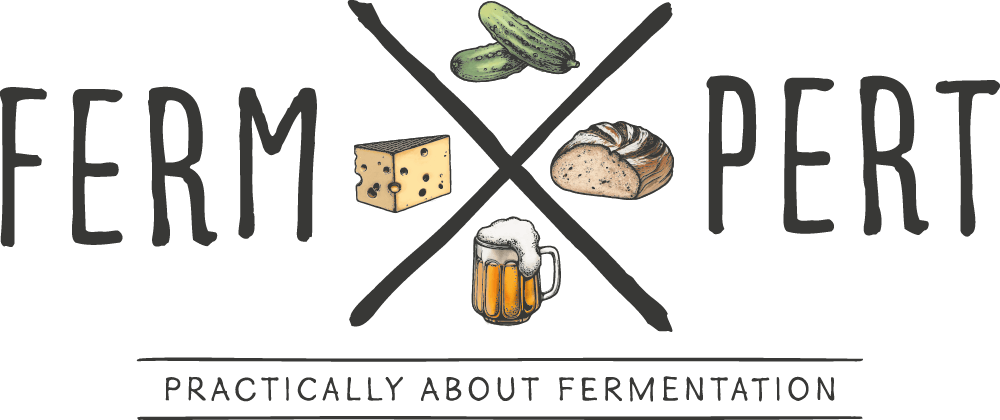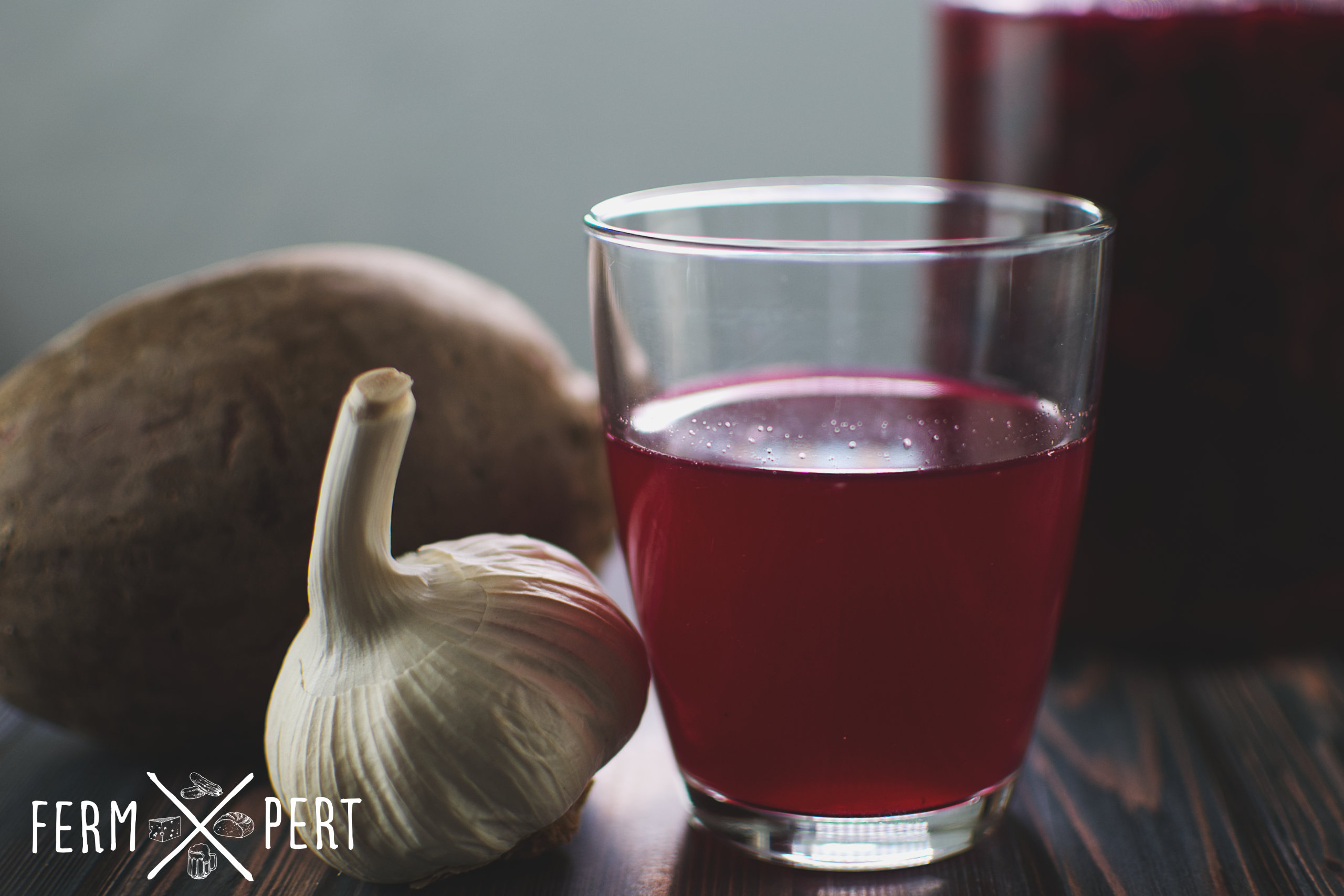Betroots can be fermented. I’ve known that much for years. Still, I’d never tried to actually ferment them – I don’t really like betroots and drinking the brine from fermenting them never appealed to me. However, it’s time to formce myself to leave my comfort zone. Maybe I’m missing out on something really delicious?
Recipe
The below recipe is scaled for a single 900 ml/1 qt jar.
- 1 large beetroot
- 2 cloves of garlic
- 2 bay leaves
- 5 allspce seeds
- 5 cloves
- 500 g hot salt brine at 2% concentration (490 g water and 10 g salt)
Peel and dice the beetroot. Peel and thickly slice the garlic.
Toss the bay leaves, allspice, cloves and garlic to the jar, followed by the diced beetroot. Pour brine over the ingredients. The jar should be filled with beetroot 2/3 of the way and the brine should make it almost full. The ingredients need to be submerged so it’s a good idea to use a fermentation weight.
Keep the jar with the lid on at room temperature for at least a week, then place it in the fridge.
Video Transcription
I have to admit I’m not the greatest beetroot enthusiast. The beetroot kvass was never really served in my family. For the purpose of making this video, I prepared multiple test batches in order to adjust the recipe to my preferences. The full recipe with ingredient amounts can be found on the blog.
In order to make kvass, I obviously need beetroots. I’ll also use garlic and some spices: bay leaves, allspice and cloves. The brine will require hot water and salt.
I start with the brine. I add salt to the water and stir until it’s fully dissolved. I set the jug aside. I’ll use it later.
I prepare the garlic. I lightly crush the cloves, then cut the root ends off. I peel them. Finally, I roughly slice them.
I peel the beetroots. I half one of them, then cut one half into thick slices. I stack the slices and dice them.
The first half of the beetroot will go into the jar in a moment. But first, I toss in some allspice, cloves, bay leaves and garlic. Finally, I place the diced beetroot in the jar. Then I dice the other half and put it in the jar as well.
It’s important that the jar isn’t filled up to the brim. In my opinion, filling it 2/3 of the way is ideal. Obviously, this will make the kvass a little less concentrated than if there were more beetroot, but when making my test batches I realised that the more concentrated the kvass was, the more prominent the earthy taste became. I don’t exactly enjoy it.
I repeat the same steps for the other jar.
When both jars are ready, I can fill them with the prepared brine. I pour a lot, only leaving minimal headspace. The liquid level in the jar will rise slightly, but since the beetroot pieces are loose, there are few carbon dioxide bubbles trapped between them and most of the gas can escape freely.
Off camera, I also added fermentation weights in order to keep all the ingredients submerged.
The jars with the lids on will sit at room temperature for at least a week, two in my case.
The bacteria strains in kvass are the same as in other lactofermented vegetables: Leuconostoc mesenteroides, Lactobacillus brevis and Lactiplantibacillus plantarum. The bacteria slowly eat the sugars available in the vegetables, excreting lactic acid and carbon dioxide. The latter forms a bit of foam on the surface, which is a good indicator of whether the fermentation is active. The fermentation of beetroot kvass tends to lag and is not very vigorous. It’s worth considering inoculating the kvass with a spoonful of brine from another active ferment, such as two day old sauerkraut.
It’s tasting day, but there are three jars of kvass on my counter instead of two. Sadly, I needed to make a new batch since the original one caught mould.
Beetroot kvass has a strong tendency to develop mould. In my case, the brine’s surface got covered by a white pellicle, which got thicker over time and eventually greyish blue hyphae appeared. Mouldy kvass must be disposed of, which is what I did.
In order to prevent mould from developing, it’s worth taking care of these basic things. First, the jars and the lids need to be sterilised or at least sanitised. They can be boiled, baked in an oven or spritzed with a no-rinse sanitiser. The vegetables need to be kept submerged at all times; a fermentation weight is helpful here. Whatever floats, will undoubtedly start a mould colony.
The second batch is looking much better. There’s some foam on the surface, indicating that the fermentation is still happening. There are no signs of mould. I remove the fermentation weight and also skim some of the foam off. The smell is rather neutral. I struggle with pouring the kvass; I probably would be better off not using a ladle with a spout. However, I eventually manage to get a sample.
The colour is intensely red. In the aroma, I pick up a typical sour note from the lactic acid, but also some spicy sweetness. I don’t smell any earthiness which often accompanies beetroots. The taste is dominated by sourness. I don’t really pick up salt, though the beetroots and the spices create a nice background. It’s quite good.
But what to do with the diced beetroots? There are a couple of possibilities. They can be added to another ferment to colour it pink and inoculate it with the kvass bacteria. But I have another solution: I add them to a salad.
I slice a bit of onion. Next, a tomato and some chilli. I add the veg to some mixed greens. Finally, I top it all off with some beetroot pieces. Salt, pepper, olive oil. I give it a mix and it’s ready. The beetroots are slightly sour and rather hard, very crunchy. They certainly give the salad a unique twist.

